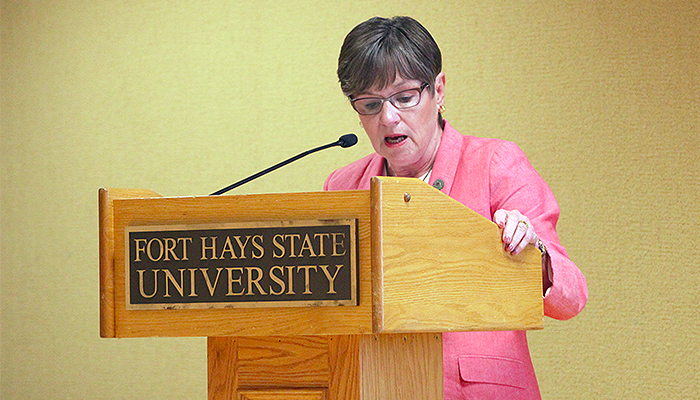By CRISTINA JANNEY
Hays Post
Although Hays has many early childhood resources, parents are not always aware of those programs and there are gaps in transitioning children from one program to the next, said stakeholders at a meeting Tuesday in Hays with the Kansas Children’s Cabinet and Trust Fund.
Multiple state agencies collaboratively have received a federal planning grant to do a needs analysis and strategic plan for early childhood education in Kansas.
The attendees broke into small groups to discuss community strengths, visions for the future and gaps in early childhood services.
Although many of the participants were from Hays, some attendees represented other nearby northwest Kansas communities.
The groups listed a variety of strengths in early childhood support.

Some of these include a safe community, low cost of living, Hays Public Library, Early Childhood Connections, an interagency committee, the upcoming Hays ARC Park, Big Brothers Big Sisters, Hays Recreation Commission, numerous quality parks, church support, Parents as Teachers, Tiger Tots and the intergenerational preschool at Via Christi.
As the discussion progressed, participants noted there is still a need for quality, affordable child care in Hays and outlying communities, especially for infants.
Although qualifying families have access to quality Headstart programs, children who are in private child care do not have the access to the same educational opportunities, participants said during group discussion.
Children’s education is left to parents, who may not be aware of the education goals their children need to reach by kindergarten or what resources are available in the community to help their children reach those goals.
One participant said this can result in children starting kindergarten unable to perform basic tasks such as being able to use scissors or grip a pencil or glue stick.
One group suggested the community offer a parent training academy to teach parents what skills their children will need to know when they enter kindergarten.
Transportation can be issue for families seeking early childhood services both in and outside of Hays, participants said.
Another group raised concerns about the availability of mental health care for children and existing wait lists in the community.
Gov. Laura Kelly attended the first portion of the engagement session and offered opening remarks.
Early in her career, Kelly worked as a recreational therapist with children.
“I learned first hand the importance of early childhood development — that it is critical to our kids’ health mentally, emotionally and physically,” she said.
“It was through my early work in the psychiatric center for children in New York and even before that when I worked in a prison for boys in Illinois. … In both of those settings, I worked mostly with adolescents, and it was very clear to me that it was too late — that we really needed to get to these kids early on, at birth, if we were really going to get them on the right track,” she said.
She said her goal as governor is to implement a robust early childhood structure across the state.
“There is no clearer reflection of the state’s priorities than the state budget,” she said. “I put my commitment to children and families front and center in my budget recommendations, but those smart investments will mean little without smart leadership steering the work of the early childhood folks.”
Despite the success of Kansas’ current early childhood community, the status quo will not propel the state forward, Kelly said.
“In today’s rapidly changing world, we must continually build on our past successes and aim even higher,” she said.
She noted research has shed more light on early childhood development since the Children’s Cabinet was established in 1999.
Children make more than a million neural connections each second from birth to age 3, she said.
“We know that those neurons form a brain architecture that sets a child’s entire life trajectory,” Kelly said. “We know that brain development is influenced by many factors, including a child’s relationships, experiences and environment. We know that these developments are cumulative and sequential for better for worse, which means our efforts to build a future workforce pipeline hinges on this early childhood period of life.”
Kelly said public/private partnerships need to be created to seamlessly transition children between early childhood education to K-12 education to technical schools and post-secondary education to the workforce.
“I am passionate about this because not only this is the right thing to do,” Kelly said, “but it reminds us that all of our futures are linked together. We all have skin in this game.”
Similar early childhood engagement sessions are being conducted throughout the state and will be used in developing a strategic plan for the state this fall. You can share your input at kschildrenscabinet.org/share.
